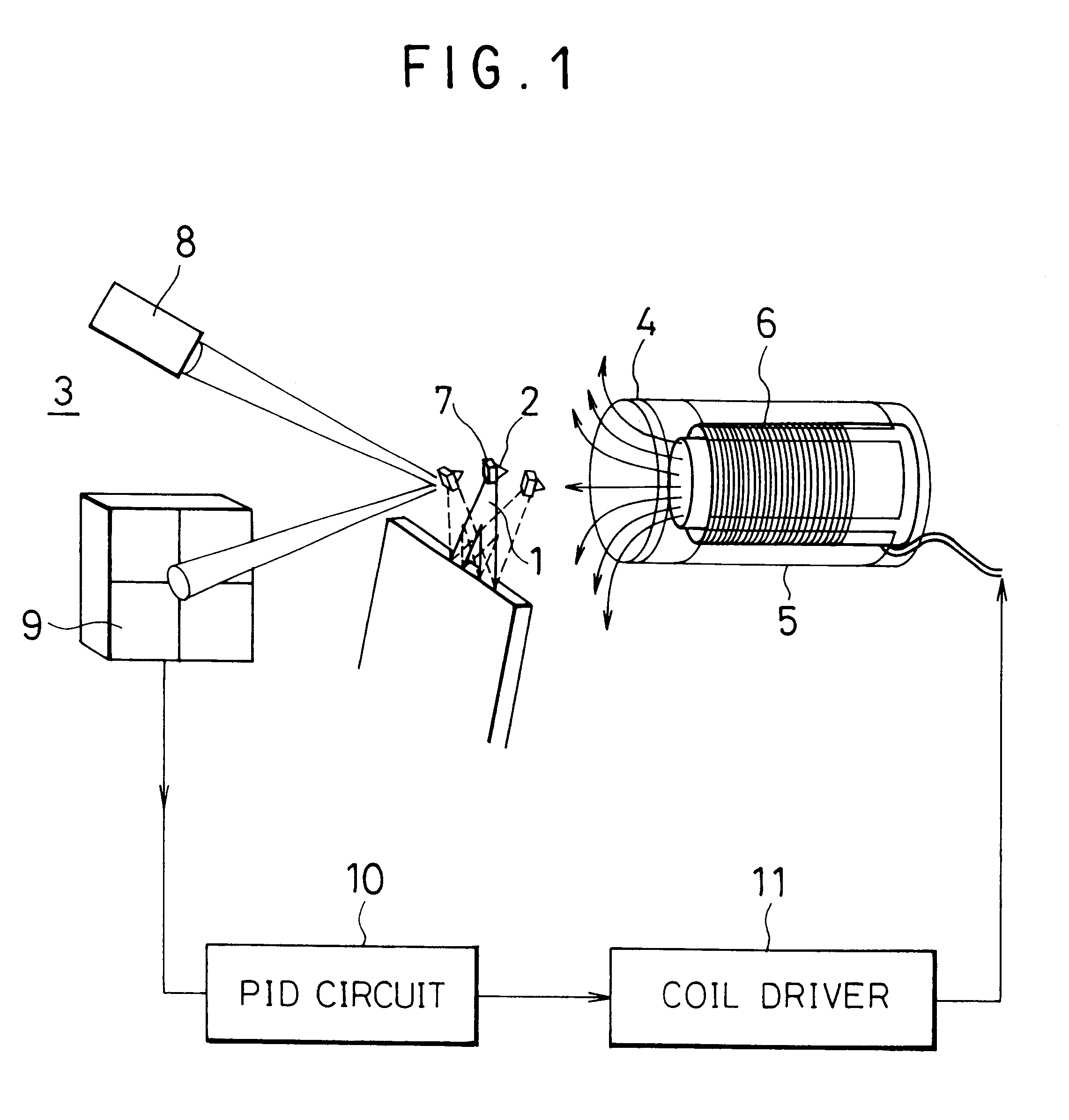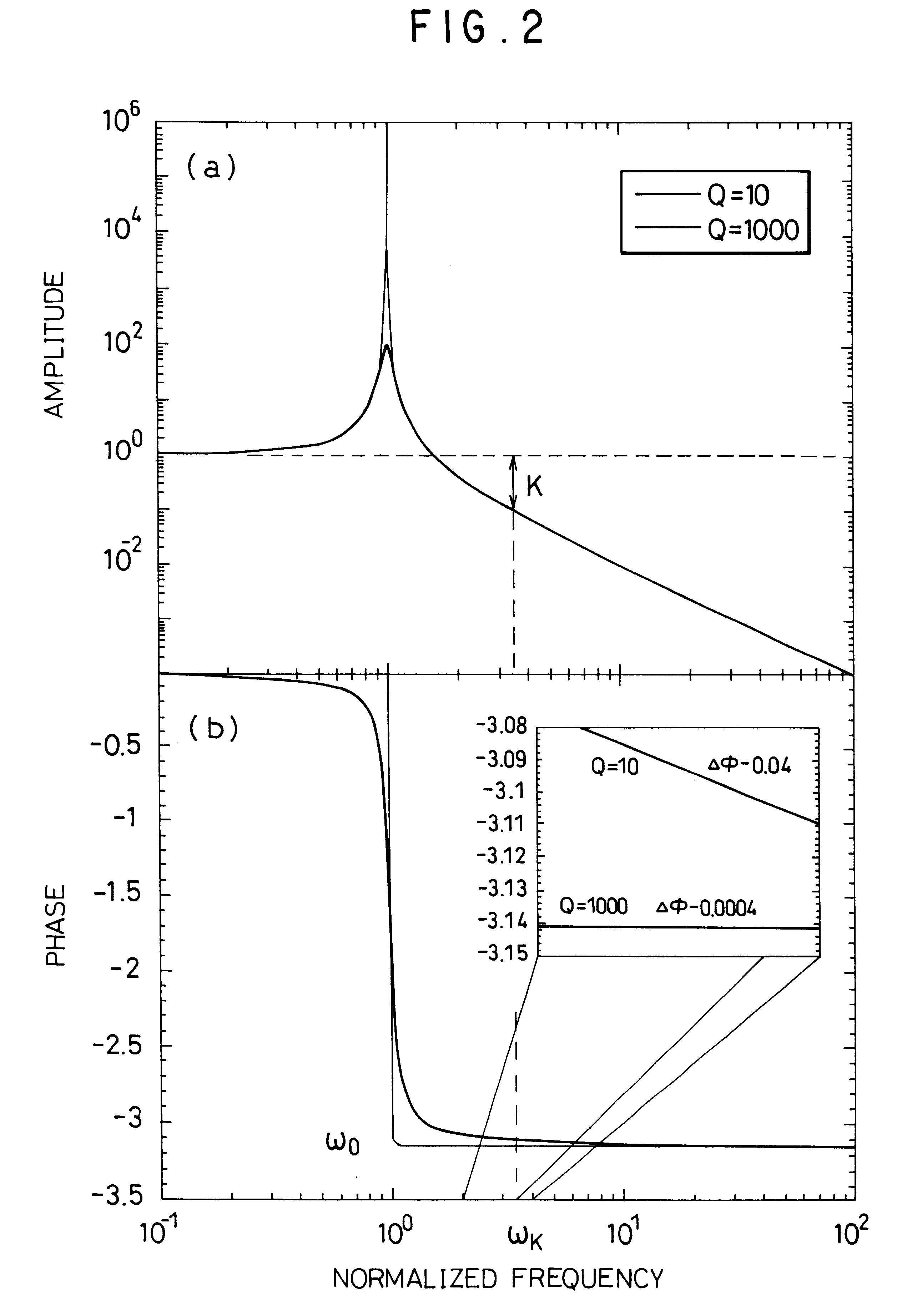Method and apparatus for force control of a scanning probe
a scanning probe and force control technology, applied in the direction of mechanical measurement arrangements, mechanical roughness/irregularity measurements, instruments, etc., can solve the problems of magnetic material deposition on the force sensor, difficult detailed calibration of force, and large applied for
- Summary
- Abstract
- Description
- Claims
- Application Information
AI Technical Summary
Problems solved by technology
Method used
Image
Examples
Embodiment Construction
A method for controlling a force acting on a scanning probe according to the present invention will be described with reference to a scanning probe microscope shown in FIG. 1.
The scanning probe microscope comprises a cantilever 1 having a tip lower surface provided with a scanning probe 2, a detection unit 3 for detecting minute displacement of the cantilever 1 to output a displacement signal, a quartered photodiode 9 for converting the displacement signal into an electrical signal, a control signal generating circuit (PID circuit) 10 for processing the electrical signal for effective feedback, a position control unit 5 for controlling a position of a sample 4, a magnetic field control unit 6 for controlling a force acting on the scanning probe 2, and a driver 11 for driving the magnetic field control unit 6.
The magnetic field control unit 6 in this embodiment comprises a core and a coil wound about the core, is disposed inside a hollow portion of the position control unit 5, and ap...
PUM
| Property | Measurement | Unit |
|---|---|---|
| frequency | aaaaa | aaaaa |
| frequency | aaaaa | aaaaa |
| coil inductance | aaaaa | aaaaa |
Abstract
Description
Claims
Application Information
 Login to View More
Login to View More - R&D
- Intellectual Property
- Life Sciences
- Materials
- Tech Scout
- Unparalleled Data Quality
- Higher Quality Content
- 60% Fewer Hallucinations
Browse by: Latest US Patents, China's latest patents, Technical Efficacy Thesaurus, Application Domain, Technology Topic, Popular Technical Reports.
© 2025 PatSnap. All rights reserved.Legal|Privacy policy|Modern Slavery Act Transparency Statement|Sitemap|About US| Contact US: help@patsnap.com



